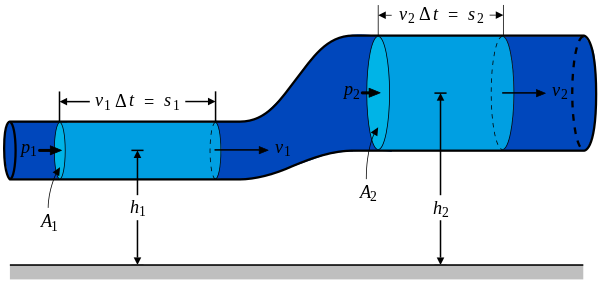Bernoulli's Principle
Bernoulli's principle states that for an incompressible fluid in laminar flow, the sum of pressure, kinetic energy per unit volume, and potential energy per unit volume is constant along a streamline.
This principle is based on the conservation of mechanical energy in the fluid, which includes kinetic and potential energy.
Relationship Between Pressure, Velocity, and Height
- Pressure:
In a moving fluid, when the fluid's velocity increases, the pressure in the fluid decreases, and vice versa. This means that in high-speed areas, the pressure is lower, and in low-speed areas, the pressure is higher.
- Velocity:
As the fluid moves faster, its kinetic energy increases. This kinetic energy is inversely related to the pressure: if the velocity increases, the pressure decreases to conserve the total energy of the fluid.
- Height:
The principle also considers the height of the fluid. Along a streamline (a path followed by a fluid element), the total energy of the fluid (pressure, kinetic energy, and potential energy) remains constant if there are no energy losses due to friction or heat.
Applications of Bernoulli's Principle
- Aerodynamics:
Explains how airplanes and their wings work. Faster airflow over the top of a curved surface creates lower pressure, generating lift.
- Hydrodynamics:
Applies to blood circulation in the human body, water flow in pipes, and other fluid-related phenomena.

Imagine a horizontal tube through which water flows. If the diameter of the tube narrows in a section (like in a funnel), the water's velocity increases in that narrow section. According to Bernoulli's principle, the pressure in the narrow section will be lower than in the wider section, where the water flows more slowly.
